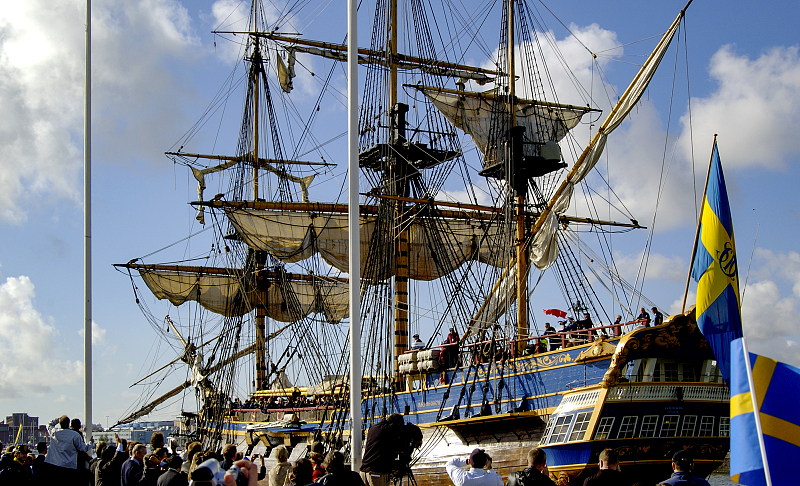
The exhibition venue of the 132nd China Import and Export Fair, also known as Canton Fair, in Guangzhou, south China's Guangdong Province, October 10, 2022. /CFP
The exhibition venue of the 132nd China Import and Export Fair, also known as Canton Fair, in Guangzhou, south China's Guangdong Province, October 10, 2022. /CFP
Editor's note: Daryl Guppy is an international financial technical analysis expert. He has provided a weekly Shanghai Index analysis for media for the Chinese mainland for more than a decade. Guppy appears regularly on CNBC Asia and is known as "The Chart Man." He is a national board member of the Australia China Business Council. The article reflects the author's opinions and not necessarily those of CGTN.
Globalization has many faces. We are most familiar with global brands such as Huawei and Starbucks, but globalization also includes the market stall vendor, the shopping malls and manufacturing supply chains. All these brand faces of globalization find a home at the China Import and Export Fair, also known as Canton Fair, held in Guangzhou, south China's Guangdong Province.
In its modern form, the twice yearly Canton Fair has been held since 1957 and it has grown from strength to strength. Guangzhou was an epi-center of global trade for hundreds of years. The Pearl River Delta was one of the main trading ports as the Europeans began to direct global trade with China. Guangzhou became synonymous with China in European minds and the modern Canton Fair continues those perceptions.
Before its discovery by the Europeans, Guangzhou was an important link in the vast silk road and maritime silk road network that enabled global trade between China and the rest of Asia, the Middle East and the Roman Empire, where the emperors wore Chinese silk.
Today we like to believe that globalization is something unique to our time but this is not correct. China has stood at the forefront of globalization for centuries. The Tang and Ming Dynasties developed a sophisticated network of cross-border trade.
The factories of China produced a wide range of goods specifically designed to appeal to global markets. The patterns on the porcelain bowls shipped from China during the Ming Dynasty were adapted to meet European tastes. The patterns on the same style of bowls shipped to markets in Asia had different designs. In contrast, European exports to foreign markets made few concessions to local tastes.
The 12,000 items of Ming Dynasty ceramics recovered from a wreck site near Belanakan, West Java in Indonesia stand as a testament to the long Chinese tradition of globalized trade that promoted exchanges between China and the world.
Over hundreds of years of history, China has developed the essentials of cross-border trade settlement that permitted trade to be settled in multiple currencies. The modern carnet letter of credit system of trade guarantees is an updated model of multicurrency trade settlement developed during the Tang Dynasty.
It was these methods of the financial settlement that set the foundations and enabled globalization. As a major trading port, Guangzhou continued these traditions throughout the centuries. The Canton Fair today, although unique in its size and capacity, remains a worthy inheritor of China's long standing participation in globalized trade as a major player.

The Gothenburg III ship sets sail for south China's Guangzhou, in Gothenburg, Sweden, October 2, 2005. /CFP
The Gothenburg III ship sets sail for south China's Guangzhou, in Gothenburg, Sweden, October 2, 2005. /CFP
Globalization does not stand still. From junks to European square sail ships, to giant container vessels and wide-bodied freight aircraft, the mechanisms of global trade have evolved.
This year the Canton Fair has taken another step to keep up with the future evolving trends of globalization. Since 2020, it has incorporated both online and offline activities due to the ongoing COVID-19 pandemic across the world. This takes the Canton Fair into full integration with advances in the digital economy and digital currencies.
The Canton Fair website will provide services for five months. From October 15 to 24, exhibitors and buyers can engage in all-weather networking on the official website. From October 24 to March 15, 2023, except for live-streaming and scheduling appointments, all other functions will remain available. This makes it more convenient for buyers to find products, meet with exhibitors and seize more opportunities.
In the past years the Canton Fair has reached out to more than 9 million overseas buyers. With a mechanism supporting digital globalization, the Canton Fair can reach an even greater number of international buyers. Globalization is not, as some have claimed, in decline.
The Canton Fair promotes trade with those who want to source products from China, or current importers wanting to see the latest China has to offer. It allows a global audience to know the new trends for specific types of products and helps them look for ideas for their businesses.
The changing structure of the Canton Fair is showing full innovative integration with the emerging digital economy. This is a healthy development in trade globalization since it increases the efficiency of cross-border trade and trade settlement. The structure of Canton Fair in 2022 ensures the continuation of exchanges between China and the world by using globally accessible platforms to enable more efficient trade.
Globalization has been an important characteristic of the Chinese economy. The Canton Fair continues this tradition with a modern addition to the way the Belt and Road Initiative builds on the achievements of the Maritime Silk Road.
(If you want to contribute and have specific expertise, please contact us at opinions@cgtn.com. Follow @thouse_opinions on Twitter to discover the latest commentaries in the CGTN Opinion Section.)